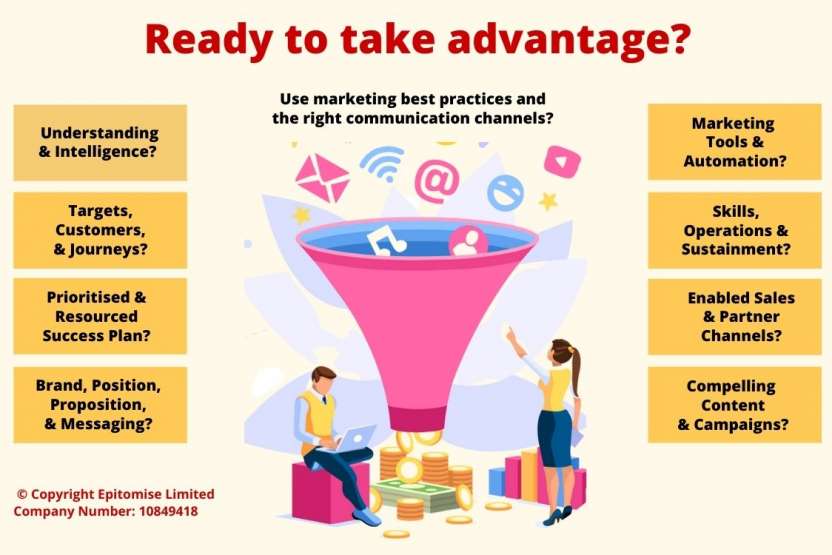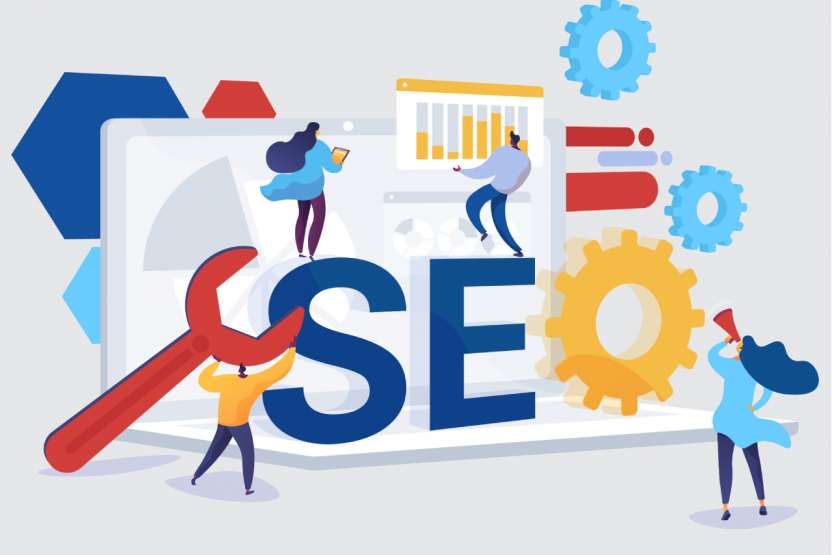Social. Media. Marketing. Depending on your role, or what day of the week it is, these three words can strike a combination of excitement and fear into the hearts of those tasked with commercial growth.
Even the most seasoned of social marketers can have days when they are stumped for ways to get better results with social. But, as enterprises become more growth marketing-focused, marketing departments have to think strategically in order to outperform competitors and to keep their demand generation funnel topped up.
The challenge for social marketers today is that they must show tangible results from both owned and earned media channels, as measured by specific KPIs.
The most measurable social marketing KPIs are:-
- Reach - How big your audience is (and who it is comprised of)
- Engagement / interactions - How engaged your audience is
- Leads / enquiries - How interested in doing business with you your audience is
- Sales / bookings - How ready to do business with you your audience is
- Revenue - How much your audience is spending with you
If organisations cannot show month-on-month growth across these metrics, directly or indirectly tied to their social marketing efforts, they need to ask: 'Are we doing it right?'
With ever more sophisticated marketing automation (MA) platforms on offer, marketers now have the tools they need to put in place strategic marketing programmes that drive performance.
Solutions like Adobe Marketing Cloud, Marketo, HubSpot, Pardot, and Salesforce.com can help tie revenue to social marketing efforts. As such, it's an exciting time to be a social marketer, or business owner looking to cost-effectively grow their business.
Who to Trust
But the rise of social networking over the last decade also means that there is a great deal of noise around how to use it for maximum impact - both in terms of branding and as a direct marketing vehicle.
A lot of the noise comes from 'gurus,' some of whom have bought their audiences rather than earned them legitimately through organic social marketing. Yet more 'strategy' comes from some of the MA players, which isn't always objective or attainable for resource and time-constrained SMEs. Especially as such advice often advocates purchasing costly SaaS subscriptions in order to be successful.
To help you cut through the noise, we've put together four strategies for maximising results.
#1: Target Networks with Return on Social In Mind
Contrary to popular belief, you do not need to split your social marketing time equally across each platform that you choose to target.
Aside from the major social networks, niche, special interest communities are springing up all of the time.
The benefit of being active on the broad appeal sites is the sheer volume of traffic on them, meaning over time you will find prospects among the suspects. Especially if you find the niche communities and groups that they like to frequent.
January 2020 figures from Statista.com show just how dominant Facebook still is, which is not surprising given it is arguably the platform with the broadest appeal, catering to both the professional and personal sides of our personas.
The chart above shows the number of active users on each platform in millions of users. Surprised that Instagram beats LinkedIn in terms of monthly users? Or how far Twitter is down the list? A great reminder to NOT base your audience's social media usage off of your own. Just because you favour one network over another does not mean everyone will - which is why it is still important to have a presence across all of the relevant networks to your offering, even after selecting one or two to focus on.
Having said that, the benefit of broadening your reach out to niche networks (About.me, Periscope, Inbound.org, beBee.com) is that you can have more specific conversations with members. Although usually in smaller doses than is possible on a more frenetically-paced site, like Twitter, where it is easy to 'get lost in the noise.'
You'll probably find that the more specific the conversation, the longer it continues, and the better chance you have of 'sparking' the beginning of a business relationship.
Conversely, while you may have many more engagements per day on a higher traffic, 'mainstream' site, the quality of those interactions will generally be lower and you can only expect a small percentage to turn into viable business leads.
Work smarter by:
- Using marketing automation tools like ContentCal, HootSuite, or Buffer to auto-post content up to three times a day
- Developing a decent sized library of evergreen content on your website so that you can link to and rotate it through your publishing schedule
- Picking one or two networks to focus on and 'go wide and deep' on those, while using automation or shortcut tools (Zapier, IFTTT) to keep up appearances on the others.
#2: Generate Leads by Sparking Engagements
Sparking an engagement is just that: starting a conversation or exchange with a social media user that allows you to convert them from a suspect to a prospect. And then, hopefully, into a customer.
Because of the wonders of the internet, we know the buy cycles in both the B2B and B2C worlds progress much quicker than they did two decades ago.
The fast pace of the 'net can lead to two things happening.
1. You get too much interaction, leading to some opportunities being overlooked or inadvertently ignored - a nice problem to have, but not optimal for growth
2. You get too little interaction and struggle to encourage engagement or grow your following
The first problem can generally be solved fairly simply: by adding more staff, or outsourcing the processing of such interactions to virtual assistants and freelancers using sites like Upwork.com and Freelancer.com.
Just make sure you hire people who can identify the best prospects, preferably with some industry experience.
The latter problem of not enough traffic, or the right kind of traffic, can also be solved -- but not overnight.
If your organisation has previously shied away from social marketing, or you are starting from zero or a small following, it will take slightly longer to build a following that sparks a good level of engagement. Unless you are lucky enough to 'go viral' early on - in social media terms - the equivalent of winning the lottery. Well, at least, hitting a home run.
Producing and distributing your own content is one of the most effective ways to set off sparks with your audience.
Types of content to consider:
- Blogs
- eBooks
- Podcasts
- Video
- Infographics
- Memes (if appropriate for your industry)
- Status updates
- Case studies
- Success stories
- Reviews
- Photos
- Polls
- Questions
- Anything else you think is worthy of sharing!
Another way to spark meaningful interaction is to start a conversation, which then leads to an action. While 'Thank you for your comment' is a good start, why not take it further to encourage deeper dialogue?
Here are some possible follow-ups:
- Ask a question - 'Have you seen our new...?'
- Add another point or fact - 'Did you know that...?'
- Complement them - 'We really like your company's...'
- Suggest a relevant resource or link - 'Check out this article...'
- Ask them to take an action - 'Download an ebook/ read a blog/ make a reservation'
- Offer to arrange a call or meeting
- Offer them a discount on their next purchase
- Offer something else of value, e.g. a coupon for a free drink when they next dine / fly / stay with you
With the last few interactions above, you are now moving the conversation from a spark to a tangible result and 'win' for you and / or your sales team.
Even if they decline, you have now begun to plant the seeds of a more transactional exchange for the future. And that's where the ROI of social media marketing is at.
#3: Generate Leads Through Social & Content
With as much as 60% of marketing budgets going to waste on average, it's vitally important for SMEs to shift resources from those campaigns that are the most effective at generating quality leads, but which also meet cost per lead and cost per acquisition targets.
Social media combined with content marketing (also known as 'inbound marketing' depending on who you are speaking with) has proved to be a powerful engine for many SMEs. Just look at the vast number of case studies and success stories on HubSpot's website if you are still not convinced.
But it's not always necessary to use costly automation software to get these kinds of results.
If you've spent any time at all on LinkedIn recently, you will have come across Josh's Fechter's viral status updates.

Josh exemplifies how important it is to be a great storyteller on social media. And to communicate in a clear, compelling manner that is on your audience's level.
While we wouldn't recommend copying Josh's style verbatim - it's important to put your company's unique brand and personality into your updates - you might consider the following:
- Formatting posts in single line sentences with an attention grabbing first line hook
- Telling a story that details a challenge, an action, and a result
- Posting content on a regular schedule so that your audience becomes more familiar with you, your company's unique voice, and your company's unique perspective on industry hot topics, innovations, or other relevant interest areas
The key is to mix up your content sharing and to ensure it's not overly-self promotional.
Social marketing experts often use the 3:1 ratio when posting content, in that they will only post one promotional post to every three non-promotional, informative, or storytelling-types of pieces.
That does not mean you cannot include a call-to-action (CTA) at the end of a non-promotional post. You can and should. However, the CTA shouldn't always be "Call us for a quote," but it should include what you would like the user to do next after reading your post (Watch a Video, Listen to our Podcast, Read our Guide).
Once the user has taken this next step, it's safe to say they are a more qualified 'suspect' than before because they have now:
- Shown interest in you and your content
- Left you their email address if the content they consumed was gated, or opened the door to further communication on the network where they engaged
You might consider implementing a strategy like Josh to push out content via messenger apps like WhatsApp or Facebook Messenger.
According to Josh, these messages have a 93% open rate.
Can you remember the last time an email marketing campaign got over a 90% open rate?
Certainly, you need to put the time in to create an asset like an ebook or guide that people are willing to trade their email for. And you need to build credibility for that to happen.
Which is why consistency plus telling stories your audience can relate to is so important on social media.
#4: Close the Deal On Social
Great, you've had a post go viral, generated interest in your business with an ebook, and started conversations with qualified buyers online. What next?
Well, you have a couple of options:
- Continue to nurture the relationship through drip content marketing personalised as much as possible - either via social or utilising messenger apps, if you don't think the prospect is ready to buy
- If you think they are ready or not far off, then go ahead and nudge them further down the funnel. If you are a B2B vendor, that normally means setting up a meeting, or if you are B2C, it means encouraging a sale
An example of closing on social is restaurant chains who turn Facebook interactions into reservations directly on their fan page, sometimes turning a complainer into a repeat paying customer by offering a goodwill gesture like vouchers. No wonder JD Wetherspoons decided to abandon its email list.
For many leisure outlets, social media goes hand-in-hand with growth-marketing - because their audience is often more receptive to engagement on social than via email, making it easier to increase brand loyalty and generate repeat business.
While individual company results will vary, social media is hot on the heels of email and paid search marketing as the number one driver of new business for many organisations. And a more cost-effective driver at that.
Liked this article? Here's one to read next
Like this? Share it!
About Epitomise:
We help SME and Technology companies use modern marketing strategies to grow. From strategic advice to tactical execution grow your business with the support of a 'top-100' award-winning marketing leader who is supported by a network of expert marketing specialists. With over 20-years' senior marketing experience and a track record of delivering results, as an attentive expert strategic marketing and services company, we help you grow your brand, leads, sales and customers by doing the right things the right way. Help for as long or as short as you need.






